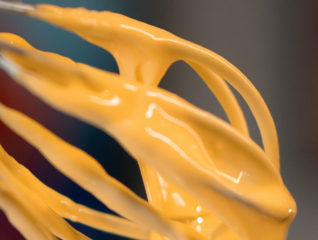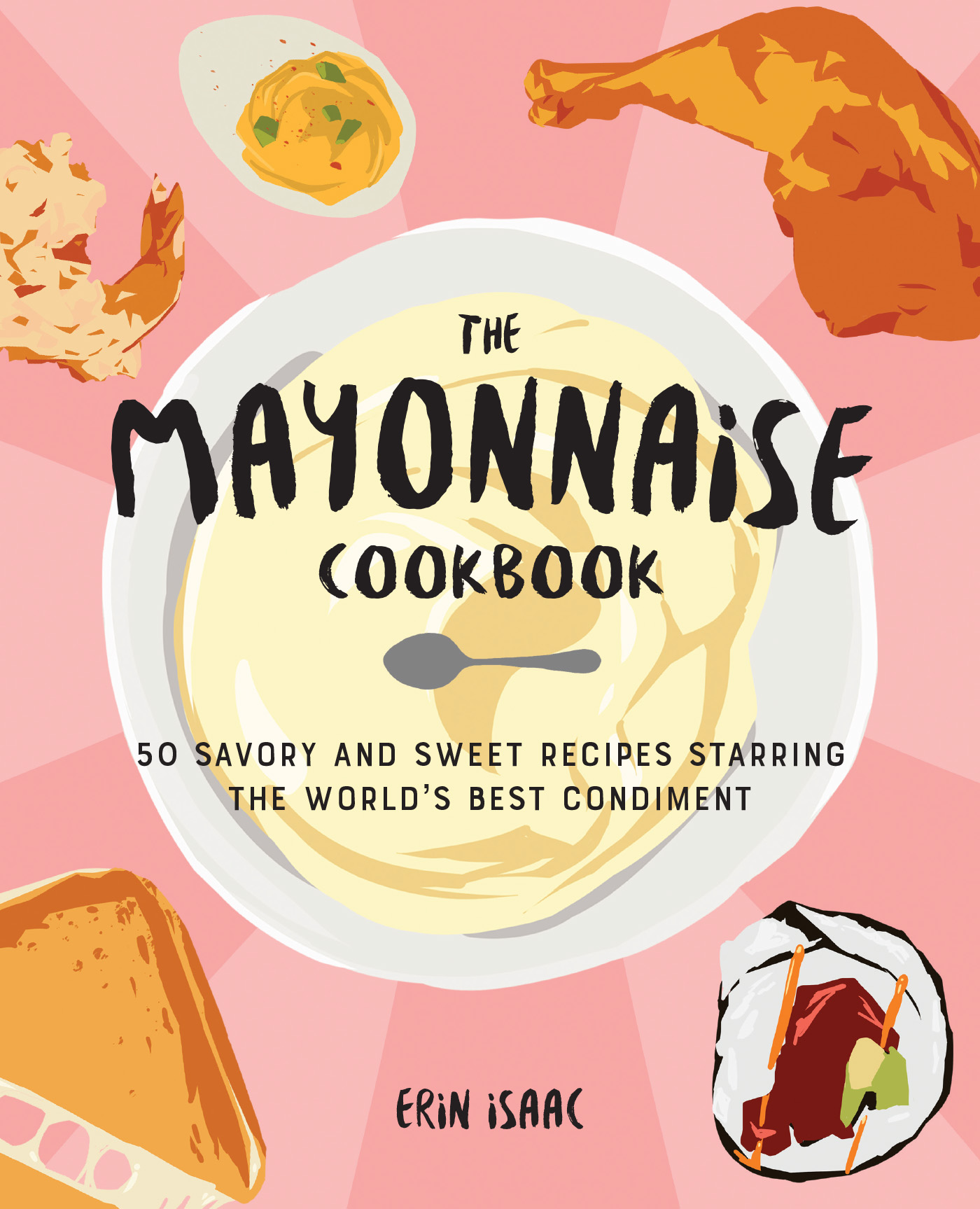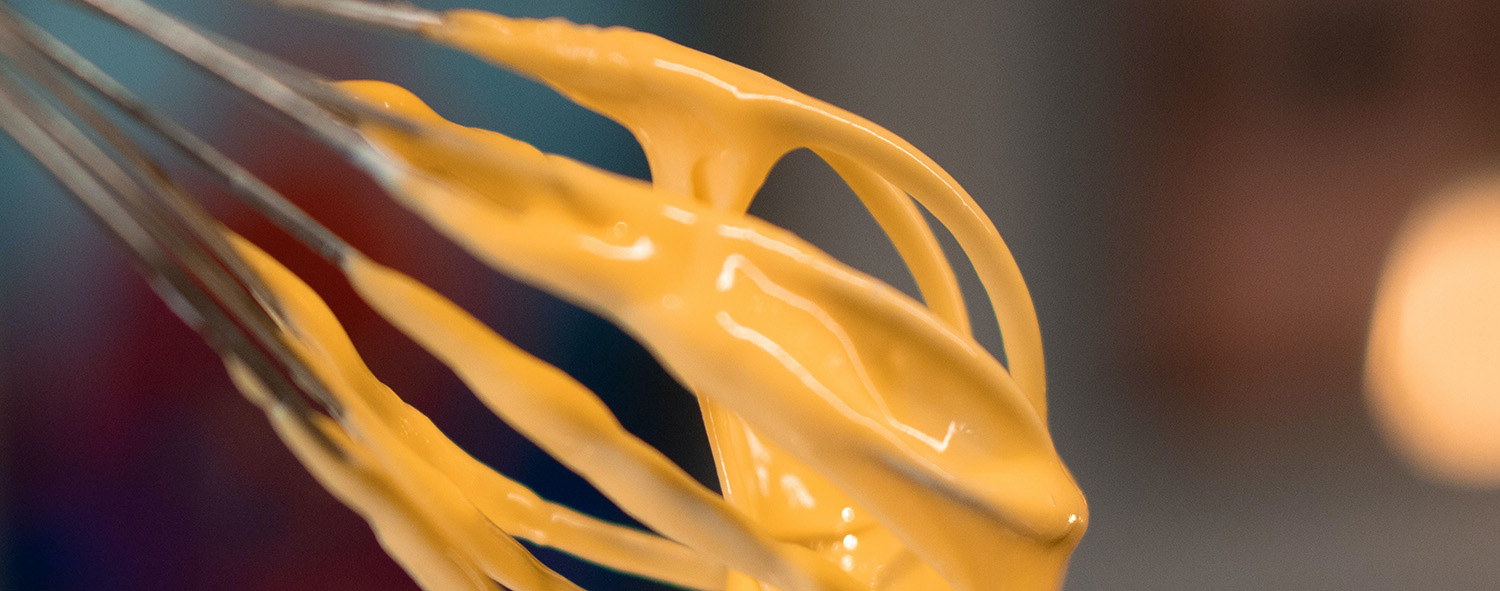
An Amazing Mayonnaise Recipe to Make Your Own Mayo
- Cooking /
- Recipes
Mayonnaise is easy to make from scratch, and it has a creamier, more complex flavor than the store-bought version. The disadvantage is that it does not keep as long as commercially prepared mayonnaise. A batch of homemade mayo should be used within a few days, whereas many store-bought mayos will last for months in the refrigerator. If you don’t think you can use up the entire amount within a few days, this mayonnaise recipe is easy to cut in half. (Hint: If you don’t have a ½ tablespoon measuring spoon, half of 1 tablespoon is 1½ teaspoons.) It’s best to use pasteurized eggs in this recipe (the carton will be labeled “pasteurized”), since the eggs won’t be cooked and consuming raw eggs could put you at risk for salmonella.
The Best-Ever Mayonnaise Recipe, from Chef Jessica Harlan
From the book Homemade Condiments

In a medium bowl, add the egg yolks, vinegar, water, and mustard. Whisk the ingredients until the mixture is smooth and foamy, about 1 minute.
Measure the oil in a liquid measuring cup with a spout. While whisking, slowly drizzle the oil into the egg mixture, adding only a few drops at a time and making sure that the oil is incorporated completely after each addition. The mayonnaise should become thick and creamy (though not quite as thick as commercial mayonnaise). You will need most of, but possibly not all, the oil. Stir in the salt and lemon juice, adding more to taste if needed. Use immediately or store, covered, in the refrigerator for up to 3 days.
Food Processor Method:
In the bowl of a food processor, add the egg yolks, vinegar, water, and mustard. Turn the food processor on and pulse to combine. With the motor running, slowly drizzle the oil, a few drops at a time, through the feed tube. Eventually the mixture will begin to thicken. Continue to slowly drizzle in the oil until you’ve achieved a thick, creamy consistency (you may not need all of the oil). Add the salt and lemon juice and pulse to combine. Stir in more salt and lemon juice to taste, if desired.
Other Mayonnaise Recipe Variations (You Have to Try):
Tarragon Mayonnaise Recipe
Increase the lemon juice to 1 tablespoon and add 3 tablespoons minced fresh tarragon when you add the salt. Use it for: elegant chicken salad with grapes and walnuts; dipping sauce for chilled poached shrimp; brush onto salmon before breading with panko crumbs and baking; mix into a creamy salad dressing.
Bacon Mayonnaise Variation
Drizzle in 1 teaspoon cooled, liquid bacon fat just before adding the oil. When it is time to add the salt and lemon juice, add 3 strips finely chopped cooked bacon. Use it for: “Double B” BLT; toss with tomato chunks for a salad; in deviled egg filling; condiment for a club sandwich.
Dilly Horseradish Mayonnaise
Increase the lemon juice to 1 tablespoon and add 2 tablespoons prepared horseradish and 2 tablespoons chopped fresh dill (2 to 3 teaspoons if using dried) when you add the salt. Use it for: salmon cakes (add a tablespoon or two to canned salmon along with a beaten egg and soe breadcrumbs, form into patties, and sauté); dipping sauce for roasted asparagus; stir into cooked salmon along with diced red onion for salmon salad or topping for toasted bagels; condiment for a roast beef and cheddar sandwich.
Dijon Mayonnaise Recipe
Substitute 1 tablespoon Dijon mustard for the mustard powder. When it is time to mix in the mustard, use 1 teaspoon and add the remaining 2 teaspoons when adding the salt and lemon juice. Use it for: egg salad with a kick; in a creamy dressing such as ranch; in a grilled ham and cheese sandwich; brush on raw fish or chicken fillets, coat in breadcrumbs, and bake.
The Mayonnaise Cookbook
Celebrate the greatest condiment of all time with the best mayo-based recipes, including comfort food classics like potato salad and deviled eggs as well as saucy cooking hacks for chocolate cupcakes and grilled cheese. Mayonnaise, lovingly referred to as mayo, is one of the most versatile yet divisive condiments. Some slather it on
Learn more






